Physical Address
304 North Cardinal St.
Dorchester Center, MA 02124
Infiltrating glial neoplasm with astrocytic features, typically with some degree of pleomorphism, increased cellularity and slow growth; also known as low-grade diffuse astrocytoma
World Health Organization (WHO) Grade II
Peak incidence in fourth decade, with wide age range
Slight male predominance (1.18 to 1)
Accounts for 10% to 15% of all astrocytic tumors and about 5% of all primary intracranial tumors
Typically found within the cerebral hemispheres, with propensity for frontal and temporal lobes, but can be found anywhere in the central nervous system
Seizure is common presenting symptom
Other symptoms include speech difficulty, behavior changes, or motor deficits
Treatment includes surgical resection and radiotherapy
Average mean survival is 6 to 8 years with individual variation
Typically progress toward a higher-grade astrocytic glioma
Better prognosis with younger age, complete resection, and seizure at presentation
Worse prognosis with older age, large tumor size, and neurologic deficit at presentation
MRI typically reveals an ill-defined, homogenous mass
Hypodensity on T1-weighted images without contrast enhancement
Appear bright on T2-weighted or fluid attenuation recovery (FLAIR) sequences
Ill-defined lesions with blurring of the gray-white matter junction
May be gray or yellow-white without tissue destruction
Can be cystic
Well-differentiated astrocyte-like cells—usually without distinct cell borders
Variably increased cellularity with irregular distribution of tumor cells
Nuclear pleomorphism—some cells with enlarged, hyperchromatic nuclei
May be microcystic
Mitotic activity absent or very rare; no necrosis or microvascular proliferation
Fibrillary astrocytoma
Prototypical and most common variant
Consists of neoplastic astrocytes in dense fibrillary background
Cells often have inconspicuous cytoplasm: “naked” nuclei
Nuclei can be atypical, with elongation and irregular nuclear contours
Often has extensive microcyst formation
Gemistocytic astrocytoma
Tumor composed of plump, angular cells with eosinophilic, glassy cytoplasm and short, haphazardly arranged processes
Consists of at least 20% neoplastic gemistocytes
Nuclei are eccentrically located and tend to be round and hyperchromatic
Perivascular lymphocytic infiltrates are common findings
Tend to have higher rate of malignant transformation compared to other diffuse astrocytomas
Protoplasmic astrocytoma
Rare variant—controversial
GFAP can be seen in all diffuse astrocytomas with a near 100% sensitivity, but it is also positive in reactive astrocytes
TP53 reactivity in more than half of tumors
S-100 is positive, but not specific
Ki-67 mitotic labeling index is typically less than 4%
P53 mutation seen in 60% of tumors (near 90% in gemistocytic astrocytoma)
Isocitrate dehydrogenase-1 ( IDH-1 ) mutations in a subset of cases; the mutated form of this protein can be detected by immunohistochemistry in low-grade and intermediate-grade gliomas of the astrocytoma and oligodendroglioma groups
Reactive gliosis—will typically have evenly spaced astrocytes with eosinophilic cytoplasm and radially oriented cell processes
Oligodendroglioma—defined by cytologic uniformity; tumor cells with small, round regular nuclei with clear perinuclear halos; tend to be p53 negative
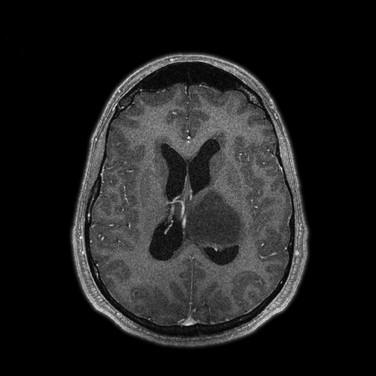
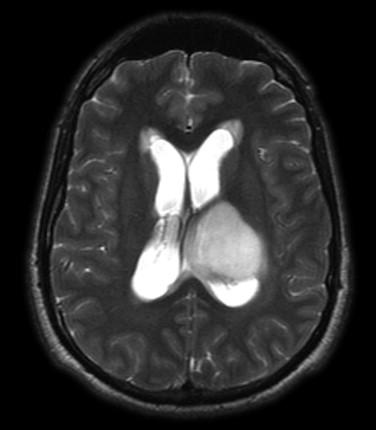
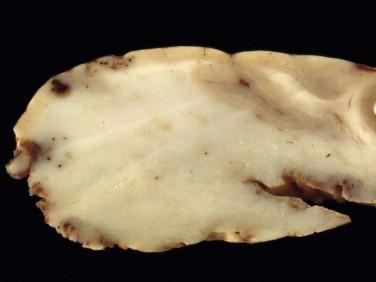
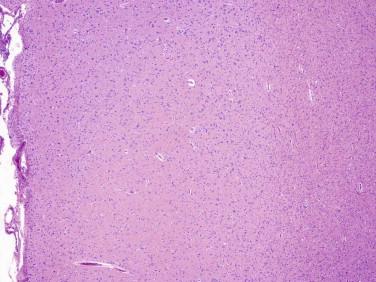
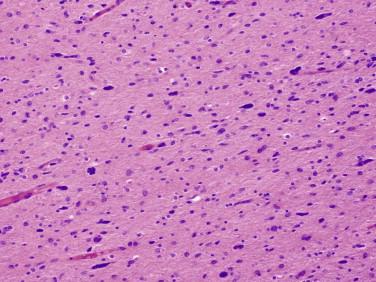
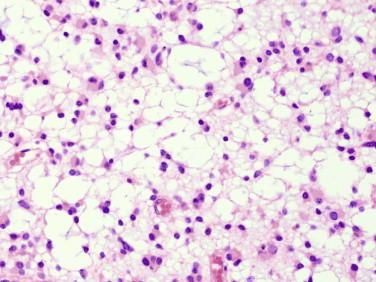
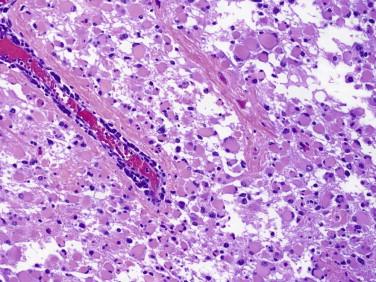
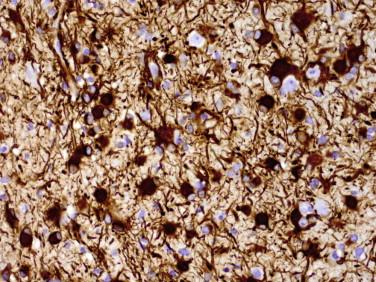
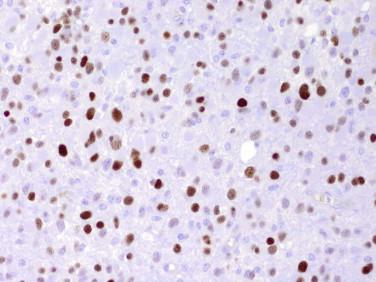
Intermediate-grade infiltrating glioma derived from malignant astrocyte-like cells, typically with increased cellularity, nuclear atypia, and mitotic activity; may arise from lower-grade diffuse astrocytoma, and may progress to glioblastoma
WHO Grade III
Become a Clinical Tree membership for Full access and enjoy Unlimited articles
If you are a member. Log in here